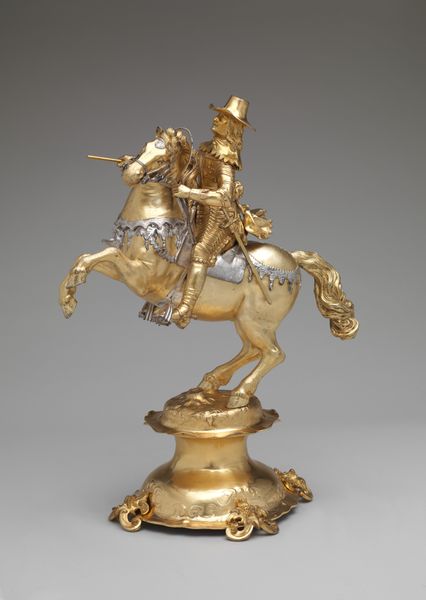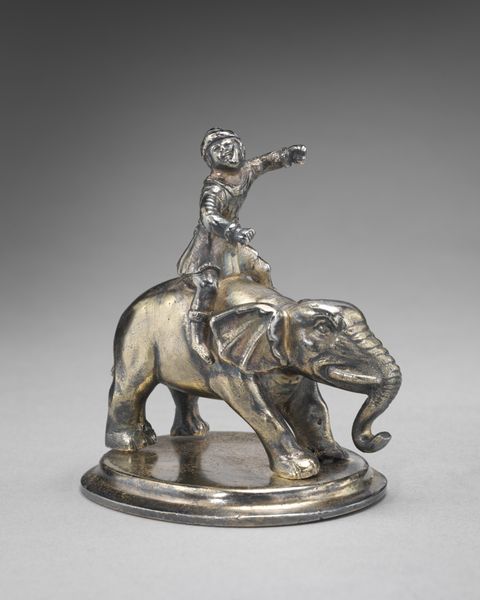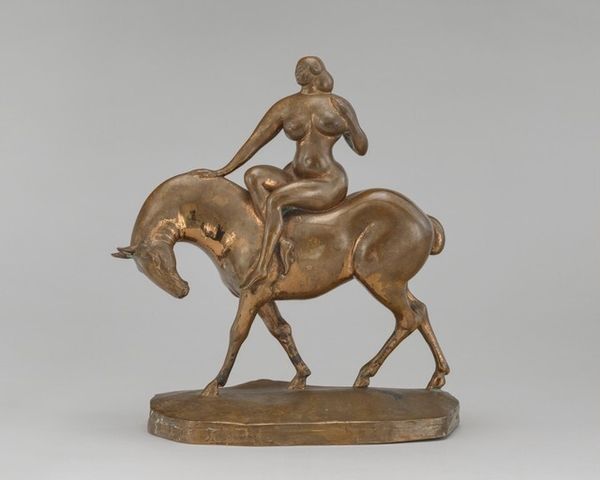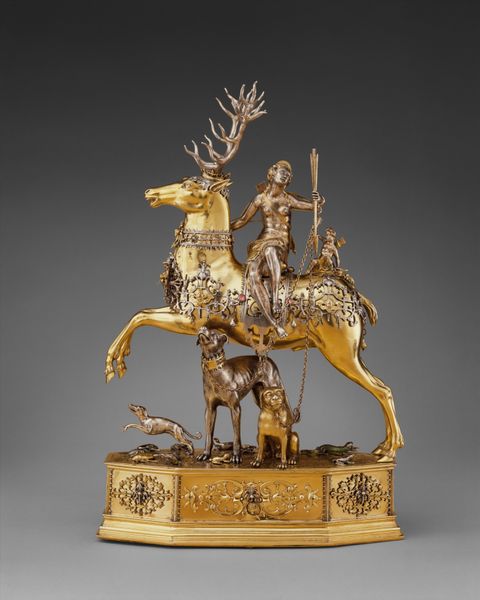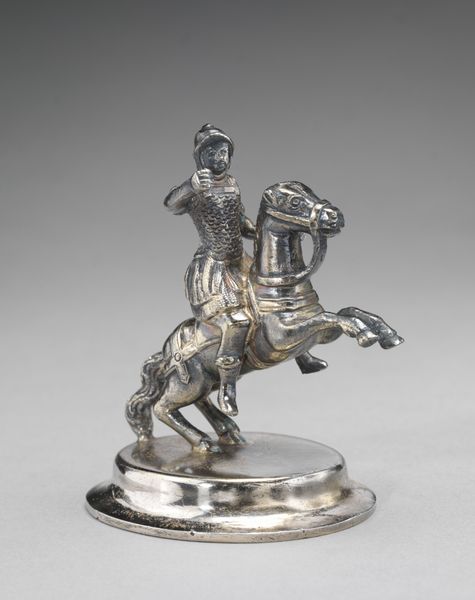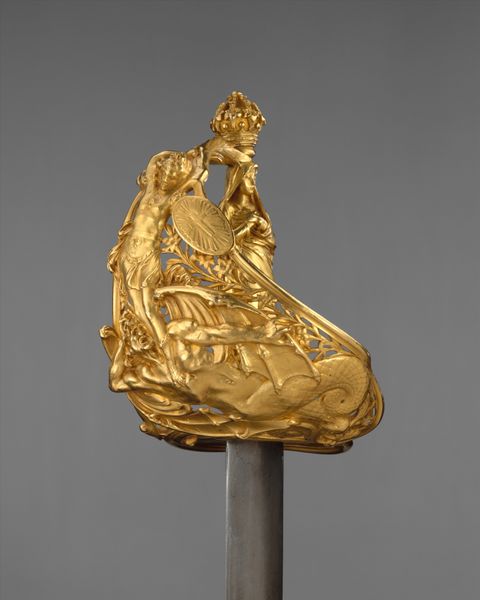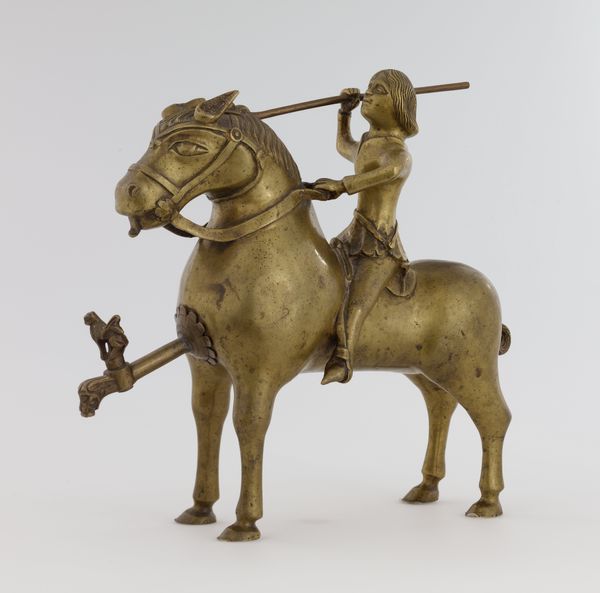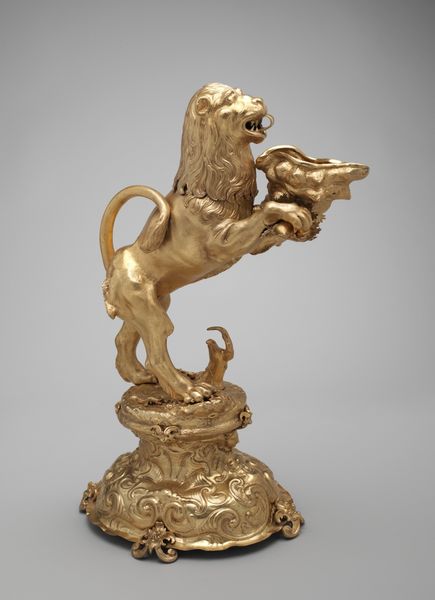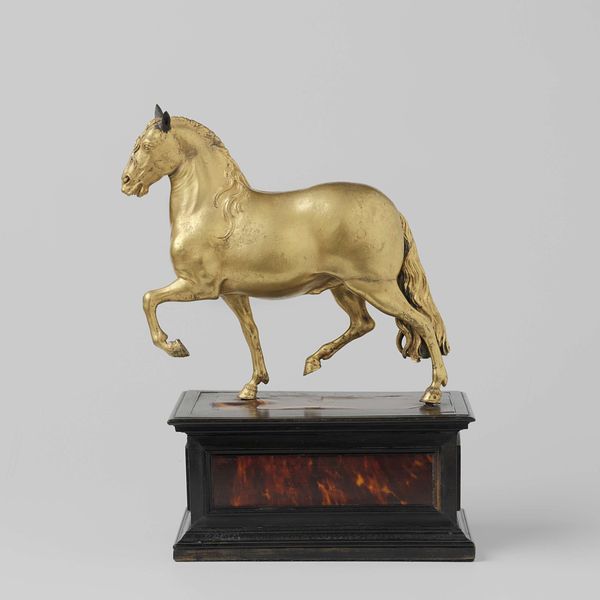
bronze, sculpture
#
narrative-art
#
animal
#
bronze
#
sculptural image
#
figuration
#
sculpture
#
orientalism
#
decorative-art
Dimensions: Overall (confirmed): 24 3/8 × 16 3/8 × 10 1/2 in. (61.9 × 41.6 × 26.7 cm)
Copyright: Public Domain
Curator: Take a look at this fascinating 19th-century bronze piece: a camel statuette by Elkington & Co., currently residing here at the Metropolitan Museum. Editor: What strikes me first is the way the bronze is polished – it creates such a smooth, almost liquid effect. The light really emphasizes the curve of the camel's neck and the fine detail of its harness. Curator: The object’s inclusion of a figure on the camel reflects a nineteenth-century European fascination with the "Orient". What seems like a celebration of the "exotic" or "foreign," however, obscures a narrative of power dynamics during European colonial projects in North Africa, and in regions along the Middle East and Asia. Editor: I see your point about power dynamics. However, I also wonder about the sculptor's process. The camel's posture, for example – it's not static. It gives the sense that the animal is in motion, walking steadily forward. What do you think about how it conveys movement and tension? Curator: Precisely. Through the gaze of those European sculptural traditions, and within the depicted visual setting, race, gender, and class were constructed and continue to resonate even to the present day, particularly given museum and gallery structures and canons of "art" that can reinscribe a selective gaze. Editor: Let’s consider that tension though, as it brings another level of aesthetic quality. There's something to be said for how Elkington’s firm managed to capture that weight and momentum. Curator: True, and we should reflect on its context. This piece appeared during a time when Britain was increasing colonial power. Luxury items were used to display this power. What seems “beautiful” and "decorative" masks these projects and aspirations, while simultaneously romanticizing these very regions and the persons that live in such settings. Editor: I see. So, you're saying that understanding the statuette requires grappling with its complicated political undertones? Curator: Absolutely. By exploring pieces from across intersectional viewpoints, we not only gain insight into how meaning is layered and reinforced over time, but we invite important contemporary reflection that help us rethink ongoing constructions around colonialist ideologies. Editor: A crucial addition to considering Elkington & Co.'s visual success within the decorative art sphere. Curator: Exactly, and that dialogue allows us to challenge long standing assumptions and engage broader audiences on decolonization.
Comments
No comments
Be the first to comment and join the conversation on the ultimate creative platform.
